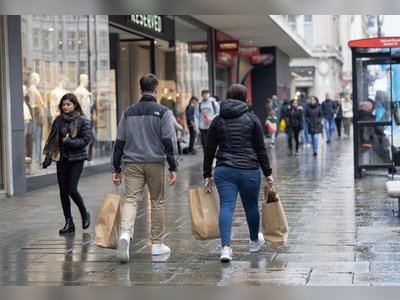UK Low-Traffic Neighbourhoods Face Rising Backlash as Pandemic Schemes Unravel
Initial moves to reduce car traffic and promote walking and cycling have become entangled in political and social resistance across British cities
When Britain’s streets fell quiet during the Covid-19 lockdowns five years ago, city leaders seized what seemed a once-in-a-generation opportunity to reshape urban life — promoting walking, cycling and low-traffic neighbourhoods (LTNs).
Now, however, the scheme is facing its most severe challenge yet, as its rollout has triggered intense social, political and legal pushback in places such as London, Bristol, Bath and beyond.
Since early 2020, more than a hundred LTNs have been established in England, largely using bollards, planters or physical barriers to restrict through motor traffic in residential streets.
The aim was to curb noise, pollution and rat-running, while encouraging active travel.
The concept won support across party lines at first, with leaders like former Prime Minister Boris Johnson and London Mayor Sadiq Khan backing the shift.
The tide turned as lockdowns lifted and the political mood shifted.
Protesters on streets claimed delivery vehicles, taxis, ambulances and drivers were forced into longer journeys or diverted onto busier boundary roads.
Reports emerged of bollards being pulled out, demonstrators blocking roads and civil-servants receiving threats.
In a landmark case this year, the High Court ruled that a London borough’s scheme had been implemented unlawfully, citing inadequate consultation and increased traffic burdens on neighbouring roads.
In Bristol, Britain’s only city with a Green-Party majority, the government of the day has delayed, re-branded and re-scoped its plans.
Officials now refer to “liveable neighbourhoods” rather than low-traffic streets, signalling recognition of the political risk.
Community feelings remain sharply divided.
One local social worker praised the quiet, safer street she cycles to work on; a disabled resident argued his once-ten-minute trip to shops now takes over an hour.
The movement has also become intertwined with broader cultural and electoral politics.
The Reform United Kingdom party has vowed to reverse many LTNs, casting them as a “war on motorists,” and contesting councils they view as imposing the schemes without proper democratic consent.
Some councils, facing electoral losses and protests, are halting or removing schemes altogether.
A Department for Transport-sponsored survey found about 45 % of respondents supported LTNs, with 21 % opposed — but local opposition studies suggest far higher local resistance.
Despite evidence from earlier implementations — including research showing certain LTNs reduced road injuries and promoted walking and cycling — the manner of rollout during the pandemic is seen as deeply flawed by critics.
Specialists say that introducing road closures before investing in alternatives like improved public transport or cycling infrastructure not only heightened frustrations but also enabled the backlash to gain political traction.
Today, the battle over LTNs stands as a flashpoint in the clash between sustainable-travel policy and motorists’ freedoms, local democracy and government ambition.
How councils and national politicians respond may determine not only the fate of street-design measures but also the broader future of Britain’s urban transport transformation.
Now, however, the scheme is facing its most severe challenge yet, as its rollout has triggered intense social, political and legal pushback in places such as London, Bristol, Bath and beyond.
Since early 2020, more than a hundred LTNs have been established in England, largely using bollards, planters or physical barriers to restrict through motor traffic in residential streets.
The aim was to curb noise, pollution and rat-running, while encouraging active travel.
The concept won support across party lines at first, with leaders like former Prime Minister Boris Johnson and London Mayor Sadiq Khan backing the shift.
The tide turned as lockdowns lifted and the political mood shifted.
Protesters on streets claimed delivery vehicles, taxis, ambulances and drivers were forced into longer journeys or diverted onto busier boundary roads.
Reports emerged of bollards being pulled out, demonstrators blocking roads and civil-servants receiving threats.
In a landmark case this year, the High Court ruled that a London borough’s scheme had been implemented unlawfully, citing inadequate consultation and increased traffic burdens on neighbouring roads.
In Bristol, Britain’s only city with a Green-Party majority, the government of the day has delayed, re-branded and re-scoped its plans.
Officials now refer to “liveable neighbourhoods” rather than low-traffic streets, signalling recognition of the political risk.
Community feelings remain sharply divided.
One local social worker praised the quiet, safer street she cycles to work on; a disabled resident argued his once-ten-minute trip to shops now takes over an hour.
The movement has also become intertwined with broader cultural and electoral politics.
The Reform United Kingdom party has vowed to reverse many LTNs, casting them as a “war on motorists,” and contesting councils they view as imposing the schemes without proper democratic consent.
Some councils, facing electoral losses and protests, are halting or removing schemes altogether.
A Department for Transport-sponsored survey found about 45 % of respondents supported LTNs, with 21 % opposed — but local opposition studies suggest far higher local resistance.
Despite evidence from earlier implementations — including research showing certain LTNs reduced road injuries and promoted walking and cycling — the manner of rollout during the pandemic is seen as deeply flawed by critics.
Specialists say that introducing road closures before investing in alternatives like improved public transport or cycling infrastructure not only heightened frustrations but also enabled the backlash to gain political traction.
Today, the battle over LTNs stands as a flashpoint in the clash between sustainable-travel policy and motorists’ freedoms, local democracy and government ambition.
How councils and national politicians respond may determine not only the fate of street-design measures but also the broader future of Britain’s urban transport transformation.









